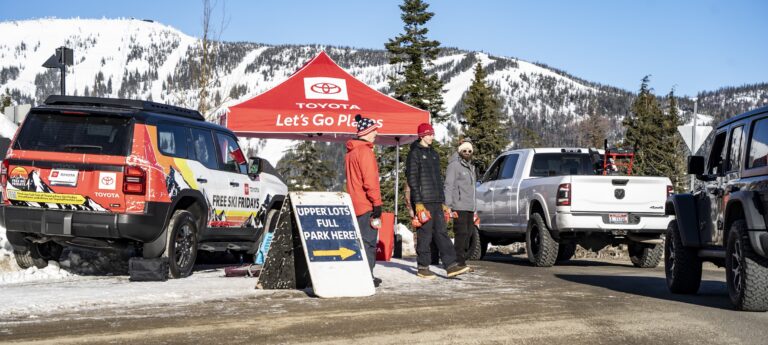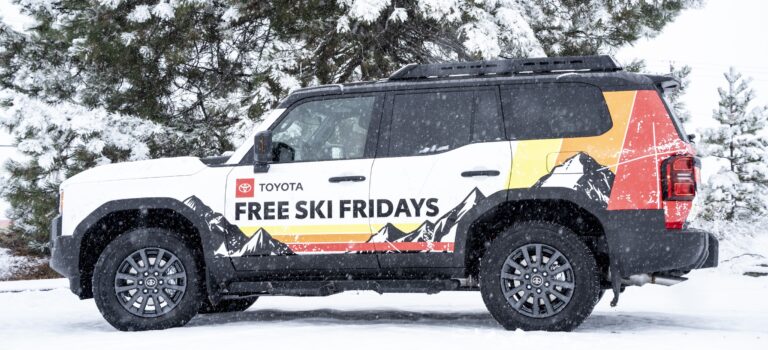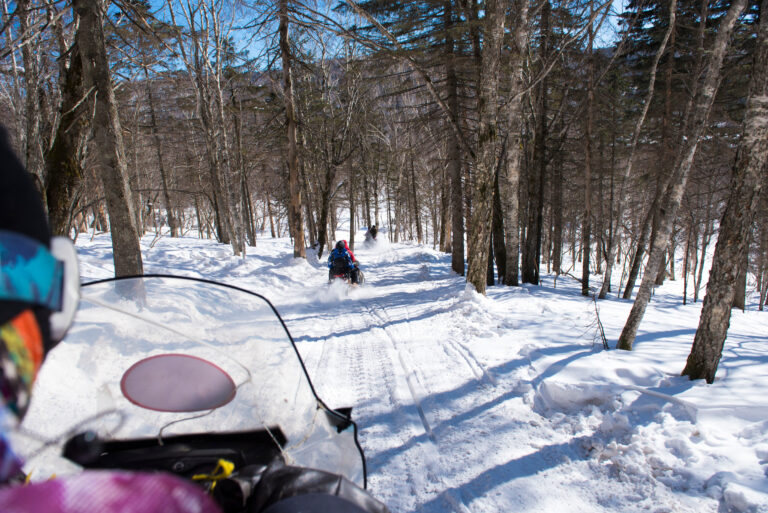Ask most kids what they like best about playgrounds, and they’ll say it’s swinging on bars, jumping off high things, and going over obstacles—in reality, practicing some of the basic moves of parkour. As a sport, parkour is defined as “the act of moving from point ‘a’ to point ‘b’ using the obstacles in your path to increase your efficiency,” according to the World Freerunning Parkour Federation. Its inspiration came with military obstacle courses.
Watch someone doing parkour moves, typically in an urban environment, and you’ll see it’s essentially running around and having fun doing cool stuff with your body. And the moves can be applied to the forest—jumping over logs, boulders, and creeks.

Children as young as 6 years old can take parkour classes at local gymnastics facilities, including Spokane Gymnastics and other local gyms. Dalton Conely, who coaches at Spokane Gymnastics, has been practicing parkour for five years, beginning age 16. He has observed his students gaining balance and strength. “Most kids in their daily lives don’t practice enough basic movements such as running, jumping, climbing, and rolling; so when we start to incorporate these skills on a weekly basis, they simply become stronger and better at moving their bodies around,” he says. Like all age-appropriate challenges, parkour also builds self-confidence.
It’s also a good activity for when kids need to be kept indoors, such as on smoky days during fire season and during shoulder seasons when outdoor sports haven’t started yet, such as winter mountain sports. Physically, parkour can be a pre-season conditioning activity for skiing and snowboarding.
Donely, who picked up skills quickly when he first learned to snowboard, explains that—like snowboarding—“Parkour demands that we are in control of and aware of our entire body…Also, working your air awareness and proprioception through flips and jumps is great if you’re into more park riding or for big jumps.”
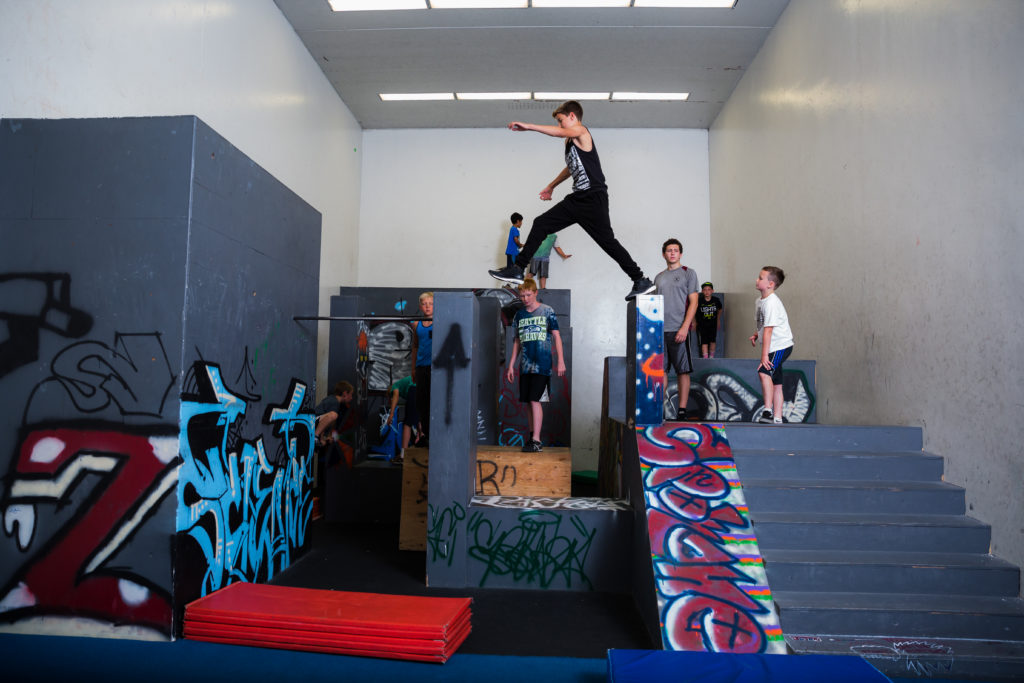
Parkour practice makes “all types of sports and movements easier…due to an increase in overall strength, balance, and coordination,” says Donely.
Likewise, indoor climbing is a healthy activity and conditioning sport. “Climbing is one of the few sports that is considered to use the entire body. It requires good foot and toe coordination, the ability to read and understand movement as you transition through challenging parts of a climb, and the ability to understand when you need to appropriately use your strength through your legs, core, or upper body,” says Phil Sanders, manager at Wild Walls Climbing Gym in Spokane.
Sanders explains that a lot of people have misconceptions about the kind of strength that climbing builds. They think it’s all about upper body, but “most of the power in rock climbing comes from the legs. Many maneuvers are about turning, twisting, or moving to best power yourself through your legs up to the next handhold.”
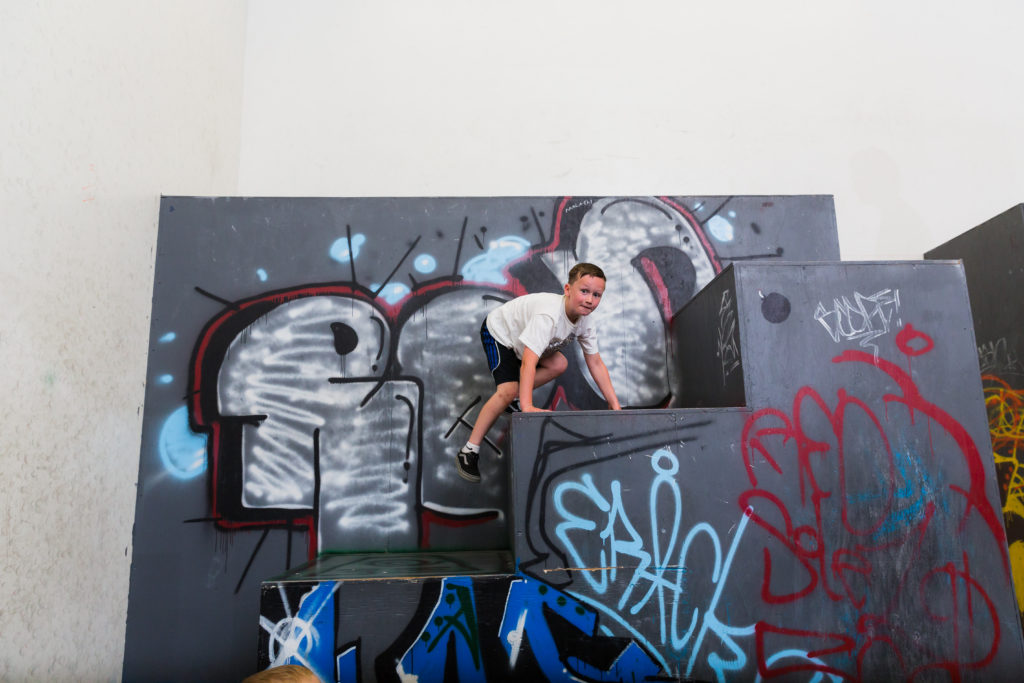
Climbing’s focus on body tension, balance, and coordination correlates to alpine skiing skills because it entails “opposite muscle engagement in your legs”—similar to how skiers must distribute weight while maneuvering turns and stops on varied terrain and snow conditions. “While climbing, you’re always pushing, jumping, or popping off your toes. In this way you are using your leg muscles in an opposite, antagonistic way traditionally used for skiing, which some claim to be beneficial,” explains Sanders. “Additionally, because climbers are always engaged during their climbs, they tend to have a decent level of endurance.” Climbing also teaches how to “assess and quickly adjust” to off-balance situations, which is similar to how a skier or snowboarder needs to maintain stability.
[Photos courtesy of Spokane Gymnastics]











